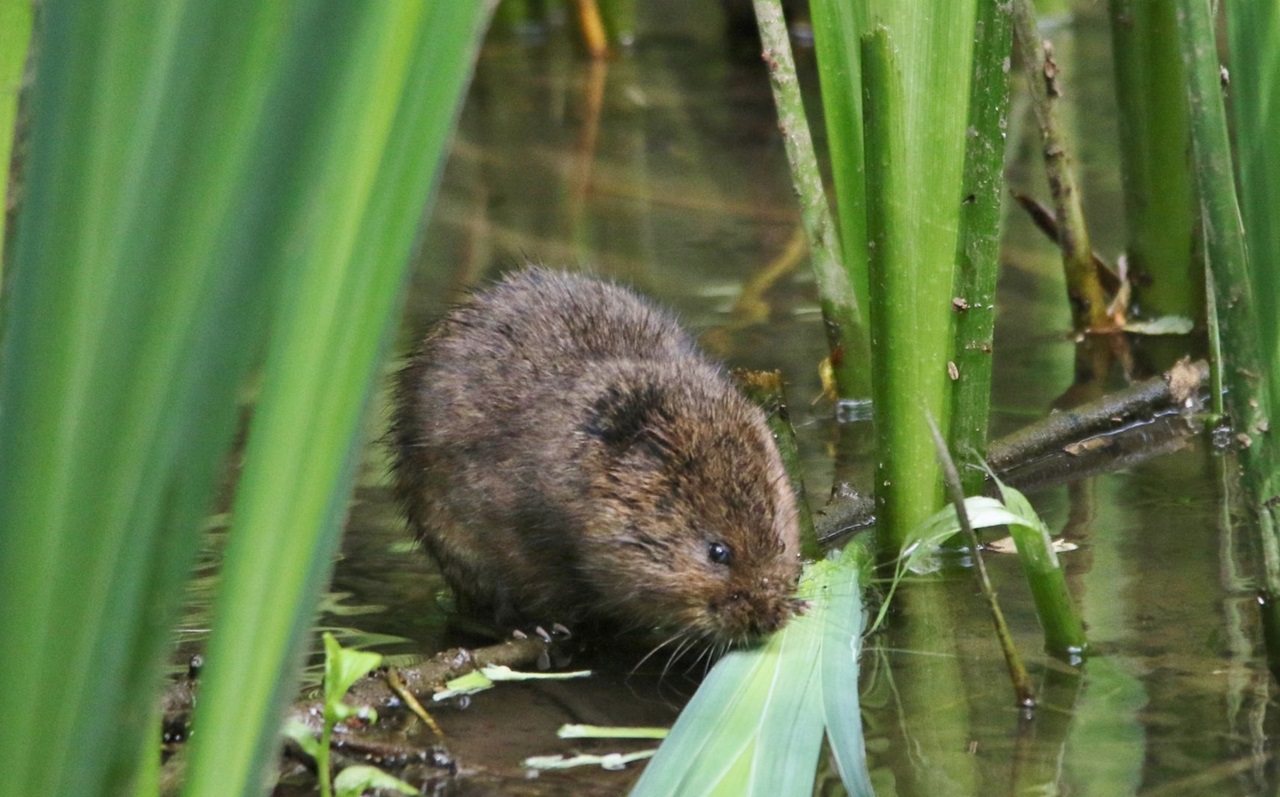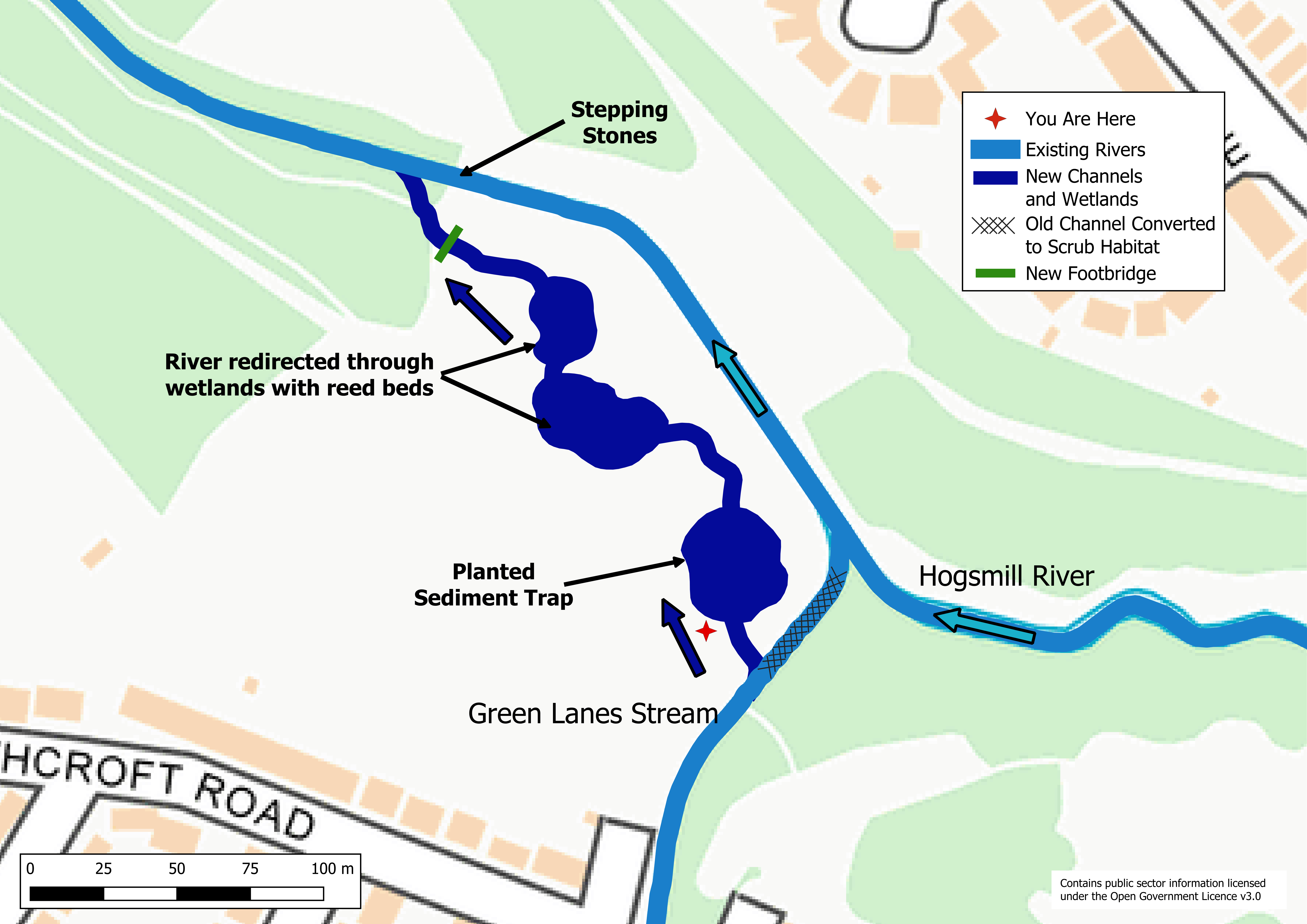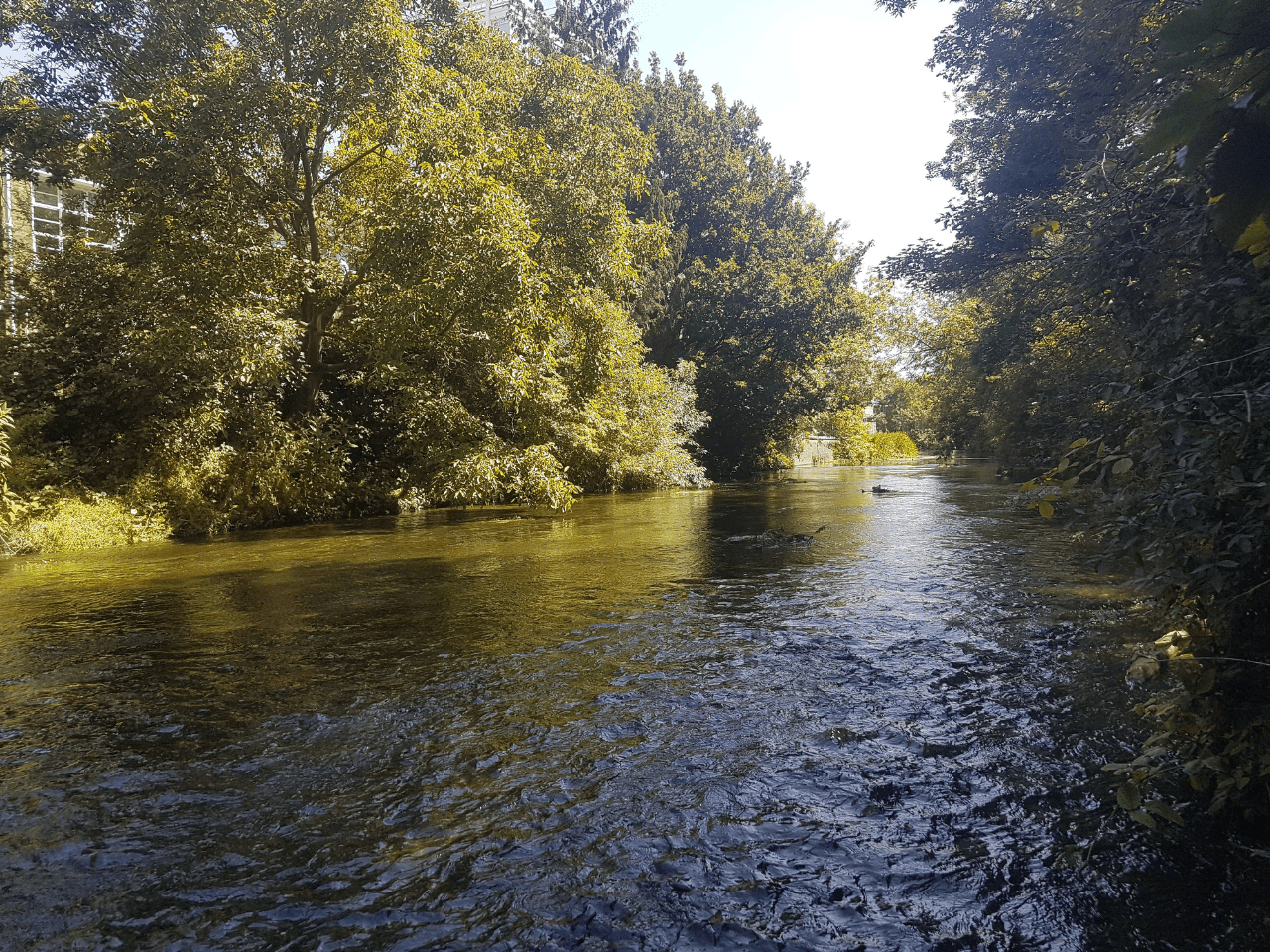Tag: Hogsmill River
What’s in a river? We’re using eDNA to find out
Dr Lewis Campbell, one of our Catchment Managers, reports how we have introduced a modern method of assessing what’s in rivers to our armoury.
Traditionally, a variety of methods have been used to evaluate biodiversity and to understand whether or not a specific species is in a particular place in the countryside. When it comes to fish, for example, these survey methods might involve the use of nets or electrofishing equipment. For mammals, methods can involve field surveys looking for footprints, droppings, burrows and dens, or installing hidden cameras that are automatically triggered with movement. When studying birds, ecologists might spend time in the field searching for visual signs or identifying different species by their calls.
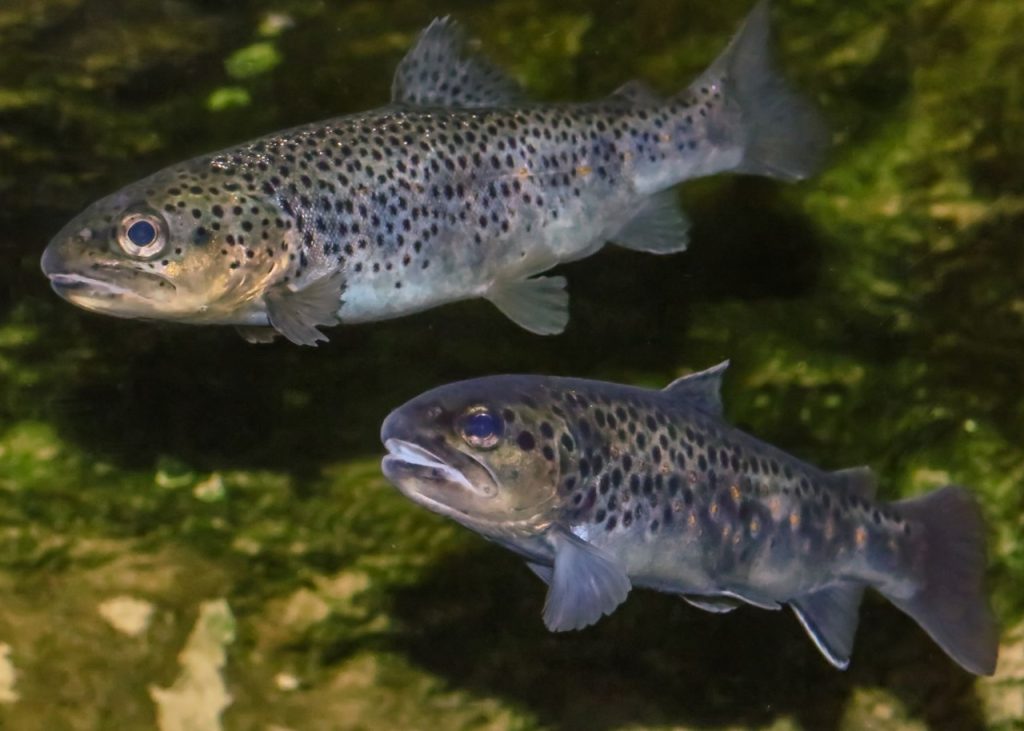
For smaller creatures, such as amphibians, reptiles and even invertebrates, various types of traps can be deployed so that the animals can be collected and counted before being released again.
One thing that this diverse set of methods all have in common is that they require a large amount of time to be spent on site. More recently, conservationists have begun to use environmental DNA, or eDNA for short, as a tool to understand species distribution. As animals go about their daily lives, they are continually shedding cells into their environment. These cells might come from their hair, skin, saliva, or even their waste, but they all contain the genetic material (DNA) belonging to that animal within their nucleus. This is environmental DNA.
Rivers could be compared to a soup containing cells and DNA from all of the organisms that live in or near by the water.
Simply by collecting a water sample, we can gain a snapshot of all the animals that were in the local vicinity at the time. We pass river water through an extremely fine grade filter, then generate and analyse the genetic sequences that the sample contains. A single water filter sample can reveal the presence of hundreds of different species from right across the animal kingdom.
eDNA is quite a modern technique. The first example to detect species in a freshwater environment was in 2008, when French researchers used the technology to detect invasive American bullfrog. Since then, technology and its potential applications have improved and expanded rapidly.
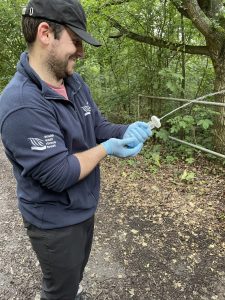
The analysis portion of this work requires numerous pieces of cutting edge technology and very powerful computers, but collecting a water filter sample is very straightforward and quick. This means that it is possible to comprehensively survey the biodiversity at a location much more efficiently than is possible using many traditional methods.
The only major drawback of eDNA surveys is that they can currently only provide information on whether a species was or was not in a given location but not how many were there. For example, using eDNA you could say “I did detect salmon in my river” but not “there were 50 salmon in my river”.
This means that it is a particularly powerful first pass tool for determining presence or absence of a species, which would then by followed up with more targeted traditional surveys. Therefore, eDNA will never replace the valuable work of professional ecologists, but is certainly a very important emerging tool in the conservationist’s arsenal.
At the South East Rivers Trust we are beginning to use eDNA to understand the biodiversity in our rivers before, during, and after our restoration work. This is critical to developing an understanding of whether or not the projects that we undertake are having the desired positive outcomes for the wildlife that call our rivers home.
An important example of this type of baselining is our WET Hogsmill. This is funded by Natural England and aims to kick start the recovery of several species of concern in the River Hogsmill in South West London.
These species – water vole, European eel, and brown and sea trout – are imperiled across our river network, but all of them historically called the Hogsmill home.
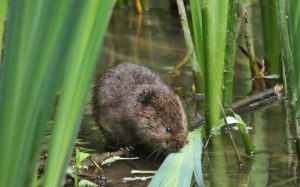
Our WET Hogsmill project will enhance the river to make it more accessible and more useable for these species, aiding their recolonisation of the river. Environmental DNA is a great tool for us to demonstrate where these species are living along the river. The aim is that over time this will document increases in the numbers of places where specific species are found along the river.
So far we have undertaken a baseline eDNA survey at several points along the Hogsmill, from near its source, to its confluence with the Thames at Kingston. We collected water samples that were used to detect a wide variety of vertebrate species. We found mammals including red fox, grey squirrels, and wood mice. We detected fish including barbel, chubb, stickleback, and many others. We also found birds including the majestic kingfisher, grey heron, magpie, moorhen, coots, and parakeets.
Importantly, we also detected the presence of eel, water vole and brown trout at locations on the Hogsmill, so we know those species are present and we hope that our work will help them to become better established on the river.
The initial survey’s results can be found on our Storymap and we will continue to monitor the river with annual eDNA surveys – so watch this space!
Natural England funds will bring back water voles, eels and trout to the Hogsmill
The South East Rivers Trust (SERT) has been awarded £393,000 as part of Natural England’s Species Recovery Programme, which aims to support targeted action to recover the UK’s most endangered species.
On 14th September, 2023, Natural England chose SERT to host the scheme’s launch at the Hogsmill Stepping Stones in Ewell, Surrey, where the fortunes of water voles, eels and trout will be boosted by the project.
A total of 63 projects across the country have been awarded a share of £14.5 million by Natural England to help recover 150 species nationwide. Following a competitive application round, the money will be used by environmental charities, wildlife organisations, local authorities and charities to deliver the Nature Recovery Network.
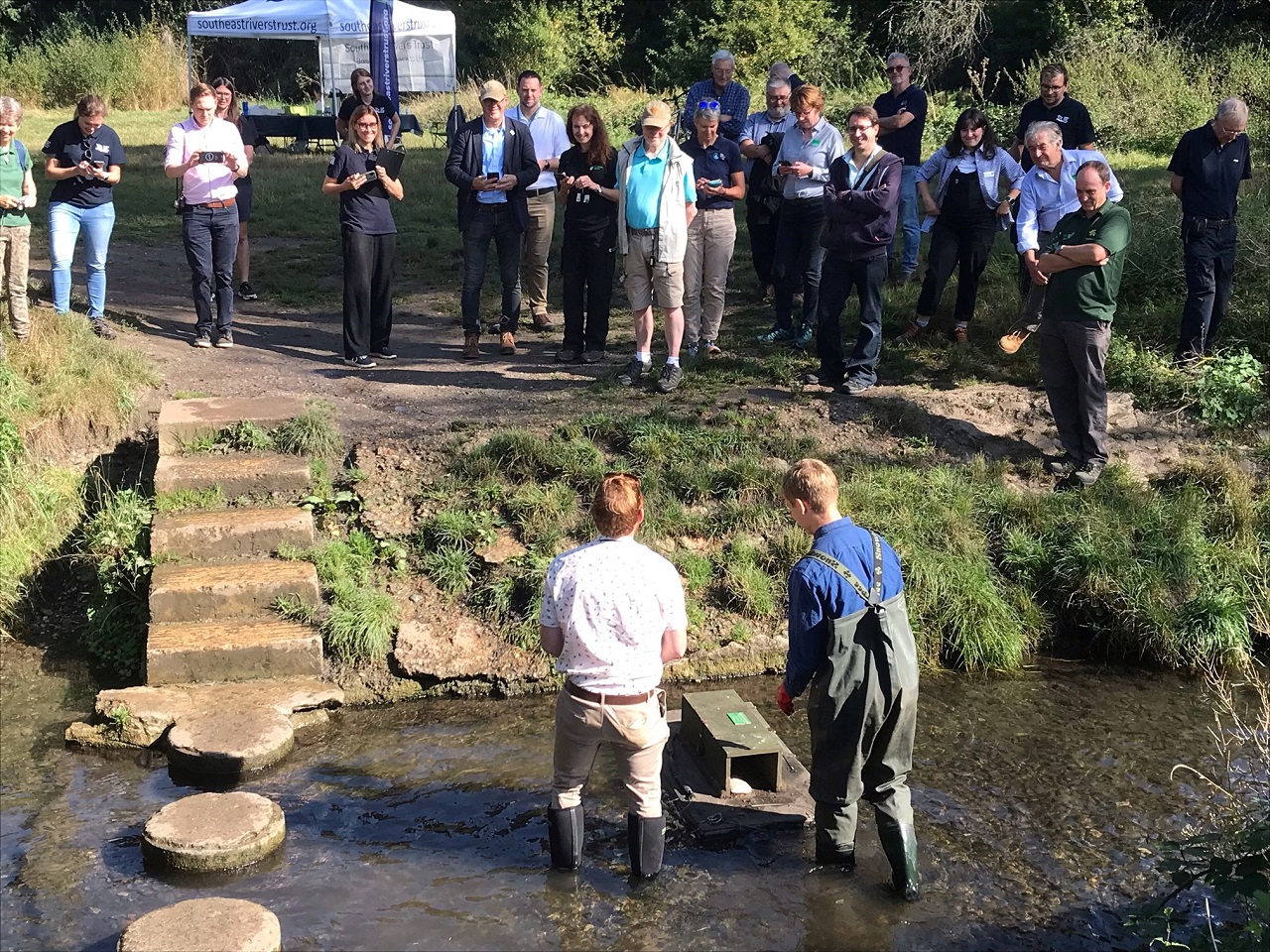
The funding supports propagation, captive rearing, translocations, research and solution-trialling to find the best approaches to enable endangered wildlife to survive and flourish.
Some of the UK’s most iconic river wildlife has been in severe decline for decades, but now thanks to a generous grant awarded to SERT by Natural England, outcomes for rare and endangered wildlife and their habitat are about to improve on the Hogsmill river in South West London.
The WET Hogsmill project led by the South East Rivers Trust, will improve the habitat of the Hogsmill river, a chalk stream in South West London. There are only around 220 chalk streams worldwide meaning that this is an exceedingly rare and special habitat. The project will reintroduce Water Voles onto the river and create new habitats for both European Eel and Brown/Sea Trout. The project will run until Spring 2025.
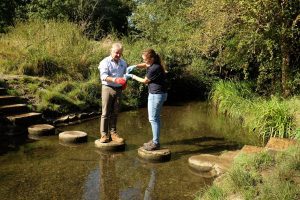
Co-CEO of SERT, Dr Bella Davies said “We are thrilled to have been successful in our application to Natural England’s Species Recovery Grant to support the recovery of water voles, eels and native wild trout which have become near extinct on the Hogsmill river in South West London. The Hogsmill is a rare urban chalk stream meaning that it’s important for nature and an important resource for people too.
“Our project will restore river habitat and create backwaters where fish can take refuge from pollution by creating wetlands to improve water quality which will help reintroduce Water Voles which were once prevalent on the river. We are excited to see this much needed work begin on the ground to bring Water Vole, European Eel and Brown/Sea Trout back to the Hogsmill.”
The Hogsmill river is the first tributary of the non-tidal river Thames and a chalk stream making it a UK Biodiversity Action Plan Priority habitat. Despite its rarity and importance, the Hogsmill has suffered a wide range of pressures leading to decline and loss of habitats and species over the last century and beyond.
Water Vole numbers have declined sharply since the end of the 20th Century making them currently the UK’s fastest declining mammal with a 97% decrease in population. Once ubiquitous and found in their millions, they are now considered to be on the brink of extinction. Water Voles were once prolific on the Hogsmill but became locally extinct in 2017.
Partnering with Citizen Zoo, a conservation charity, SERT will release 150 Water Voles across two sites on the Hogsmill, supplementing 101 Water Voles previously released by Citizen Zoo in 2022. This will help to increase the genetic diversity of the population.
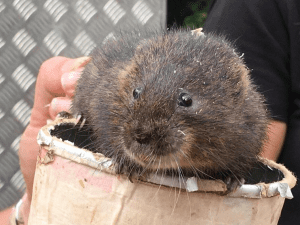
European Eel are also critically endangered with levels declining by 90-98% from historic figures. Eels migrate up rivers during their life span and recent surveys on the upper Hogsmill recorded just one eel in 2016 and three in 2022. The WET Hogsmill project will support the creation of a large wetland and backwater while also creating a more complex instream habitat which is favoured by European Eel.
Trout have been extinct on the Hogsmill since the 1900s, owing to 19 predominantly obsolete weirs barring their passage, and preventing them from reaching critical spawning grounds in the river’s headwaters. Over the past decade SERT has made 18 of these weirs passable for fish and other species by either removing them or installing technical fish passes or easements. In 2024 the final remaining weir will be made passable for multiple fish species including Brown/Sea Trout and European Eel. By spring 2025 these fish will once again be able to access and migrate throughout the whole river for the first time in over 200 years.
SERT will provide a wide range of complementary community education and engagement activities for members of the public, schools and local businesses. Planned activities include installation of an interactive nature trail, indoor and outdoor education sessions, and community talks to help local people and businesses understand how they can help protect rivers and wildlife.
There will also be several opportunities to volunteer. Those interested to learn more about the project and volunteering activities can sign up to our newsletter or bookmark our events calendar for more information.
Watch our Co-CEO Dr Bella Davies explain how the project will help species in the Hogsmill.
Construction to start on Chamber Mead Wetlands
Work to create a major new series of wetlands at Chamber Mead is scheduled to begin on 29th August – pushed back from 21st August – and is planned to take approximately 10 weeks.
The project, developed over several years by the South East Rivers Trust (SERT), is designed to help improve water quality along a stretch of the Hogsmill River near Ewell. The project will also help a wider range of wildlife flourish in this part of the Hogsmill Local Nature Reserve and improve the area as a place for people to enjoy.
Water quality in this section of the Hogsmill River is adversely affected by pollution from road runoff, foul sewage pipes incorrectly connected into surface water drains and discharges from the Epsom Storm Tanks.
Wetlands are a nature-based solution to improving water quality. Water that drains through them is gradually filtered by plants and captured in the soil, intercepting and treating pollution.
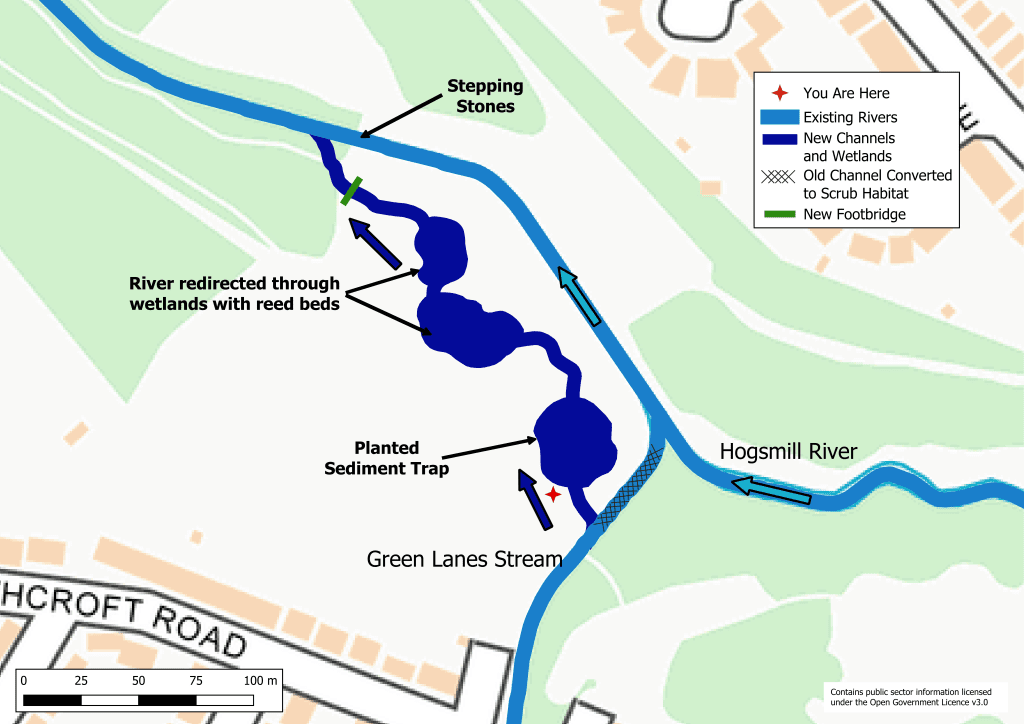
Increased plants, pollinators and other wildlife connected to the wetlands will provide an attractive addition to this popular open space, as well as providing opportunities for outdoor education.
The new wetlands will intercept water from the Green Lanes Stream, before connecting the river channel back into the Hogsmill River, downstream of the famous Stepping Stones. This will safeguard 200 metres of chalk stream from pollution, reducing the risk to health and improving the area as a community amenity.
Further downstream, the wetlands will continue to provide benefits to the Hogsmill River, which is one of about only 200 chalk streams in the world.
Planning permission was granted last year by Epsom & Ewell Borough Council.
Supported by the Hogsmill Catchment Partnership, the project has received funding and support from The Coca-Cola Foundation, the Environment Agency, Surrey County Council, the Rivers Trust, the Zoological Society of London and Thames Water.
It is part of the wider Replenish programme in partnership with the Coca-Cola Foundation and Rivers Trust which aims to “replenish” or restore millions of litres of water in this and other local catchments, in turn improving biodiversity.
Ed Byers, Senior Project Manager at SERT, said: “We are excited to be bringing the Chamber Mead wetlands to the Hogsmill Local Nature Reserve.
“The wetlands are much needed to improve the water quality of a precious chalk stream for wildlife and for the enjoyment of the public, who have shown great support for this project.
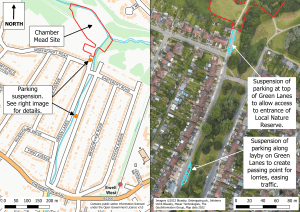
“As well as reducing pollution, the plants chosen, such as brooklime, marsh marigold and purple loosestrife, will also act as a magnet for an abundance of wildlife and further improve this much-loved local space.”
Parking restrictions will be in place at two locations along the Green Lanes during the works, to allow site access for vehicles involved in the construction phase and to ensure public safety.
The work will also require a large number of lorry movements to remove excavated material from the site.
Full details of the Chamber Mead wetlands project can be found on our dedicated webpage.
Hogsmill Community Newsletter
The Hogsmill Community Newsletter summarises the results of River Monitoring Initiative (RMI) sampling on the Hogsmill, together with other pollution monitoring and river-related activities and events.
The RMI is a national scheme for monitoring the health of rivers. Volunteers undertake regular surveys using a standard net sampling technique to count the number of certain “water quality sensitive” invertebrates.
An overall “score” is then calculated. A sharp fall or a drop below a “trigger” level could indicate pollution. This can then be reported to the Environment Agency (EA) to enable further investigation.

